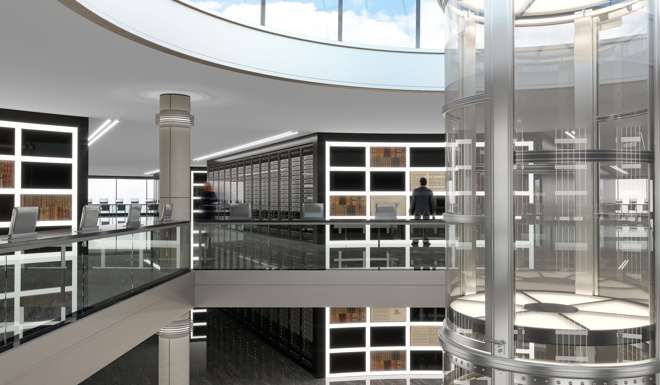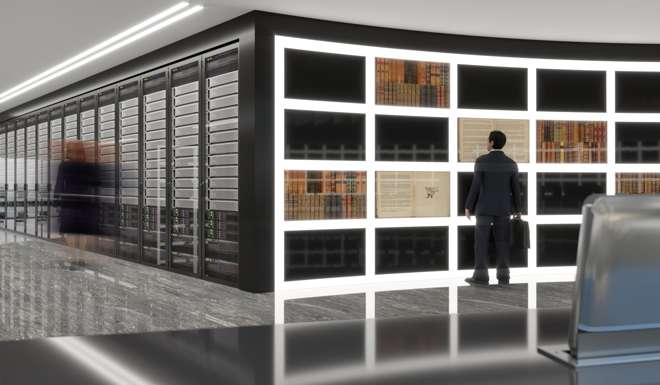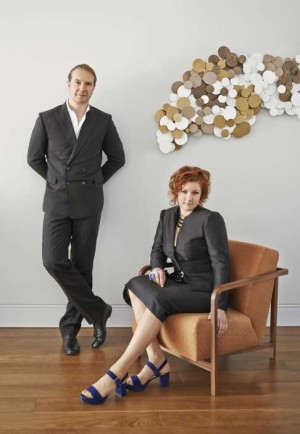How a HK$287 million library can help solve Hong Kong’s storage problems – and preserve precious books
Fearing that books will be replaced by digital resources, many are starting to collect rare and precious editions – but doing so may require a hi-tech library

Books have long been regarded a medium of humanity’s intellectual treasure – our knowledge. Production has evolved from setting down words on stone tablets, bamboo, leather and paper, to print; and now publishing is going digital.
Fearing that books will soon be replaced by digital resources and e-books, many are now seeking to collect good books, but doing so takes space and involves maintenance and an efficient storage system. For Anna Agapova, co-founder of the Russia-based architecture and interior design firm Oleg Klodt Architecture and Design, technology can help.
“In designing this library we were setting out the Library of the Future – information will be [gathered] in it for many years,” says Agapova, who worked with STYLEto come up with a solution for joining the past with the future. “The library as a whole operates as a vast electronic information bank, offering texts from Ancient Egyptian papyruses to the latest trends in modern art.”
According to Agapova, “the future will be [about] the speed of thought, and time will never suffice” – and efficiency is key. The hi-tech features of the design will save you time in finding what you seek. “Now we have to spend ages in our search for reliable high-quality information. With this Library of the Future, this kind of search would take five minutes.” All the books will be transcribed into electronic data while the actual books will be stored in special storage units located on different floors of the 15-storey futuristic library. The storeys are systematically categorised according to primary themes, from theology to art, science
to history.
Visitors are escorted to the central lobby space with the capsule lift which connects all the floors at the centre of the building. On entering the glass tube-like lift, visitors need to enter the information into the search engine for the lift to go to the corresponding floor. Walking across a transparent bridge to the right spot, one can see on the monitors the book spines and a scanned image of the original inside page.

Agapova explains that the reason for preserving the original appearance of print is that “modern technology is killing the feelings of warmth and touch we get from books, and these feelings are among the most valuable and alluring in life”.

If you feel the need to touch an actual book and enjoy the pleasure of flipping through the pages, prior orders could be placed so that you could inspect the book in a special box.
This library’s design concept is eco-friendly. Information can be wirelessly transferred to the user’s personal computer or the library’s public computers situated in the outer ring on each floor. During the search, the search history of each registered user will be collected through a system known as collaborative filtration. The system aims to predict the member’s interests and provide recommendations of relevant literature on their next search.

There will be abundant natural sunlight in the library, and the lavish use of transparent materials on the walls and floors makes the area look more spacious. The purpose is to create a serene, almost spiritual, space in which visitors can immerse themselves in reading and not be distracted by their thoughts.
For those with a more refined collection, Agapova says it would be very simple to adapt the interiors of the library to suit a private property. A section of the 15-storey library can be built in your home as long as you have a computer and space to store your books of interest.
Breakdown of Costs
CONSTRUCTION: HK$15 MILLION
INTERIOR DESIGN AND CONSULTATION: HK$11MILLION
FURNISHINGS: HK$149 MILLION
HI-TECH SYSTEM: HK$112 MILLION
TOTAL: HK$287 MILLION

Illustration: Oleg Klodt Architecture and Design
Want more articles like this? Follow STYLE on Facebook